
Thaıdene Nëné Xá Dá Yáłtı
Thaıdene Nëné National Park Reserve
Thaıdene Nëné Xá Dá Yáłtı is the operational management board of the Thaıdene Nëné Indigenous Protected Area. Thaıdene Nëné Xá Dá Yáłtı means “the people that speak for Thaıdene Nëné” in Dene yatı.
Board members are appointed by the Łutsël K’é Dene First Nation, Northwest Territory Métis Nation, Parks Canada, and the Government of the Northwest Territories. Following their appointment, these individuals no longer represent the parties that appointed them; they speak only for Thaıdene Nëné.
Each party designates a senior representative or representatives to attend meetings of Thaıdene Nëné Xá Dá Yáłtı and provide support to the board.
Tasked with thinking long term for the land and the people, Thaıdene Nëné Xá Dá Yáłtı provides its best guidance on planning, management, operation, monitoring, and evaluation within the protected area.
Thaıdene Nëné Xá Dá Yáłtı uses consensus to make decisions, which guide the parties in carrying out operations in fulfillment of the following objectives: to protect the land; to protect Indigenous ways of life; and to ensure future generations are able to live in relation to the land as the ancestors did.
Thaıdene Nëné Xá Dá Yáłtı builds on the model of the Archipelago Management Board piloted by the Haida in Gwaii Haanas National Park. One thing that distinguishes Thaıdene Nëné from Gwaii Haanas is that in addition to shared management and decision-making, the parties have agreed to shared operations. The parties work together to decide, for example, who will build a boardwalk or who will staff a safety patrol. Once direction is received from Thaıdene Nëné Xá Dá Yáłtı, the parties collaboratively determine how they will optimize their resources to carry out the board’s decisions.
Although decision-making and operations are shared, the parties have different responsibilities. For example, caring for sacred spaces, such as Ts’ąkuı Theda, the spiritual heart of Thaıdene Nëné, is the responsibility of Łutsël K’é.
Addie Jonasson Addie Jonasson was born Adeline Boucher in a tent on Tędhul Dezé (Snowdrift River) in the fall time. For the first eight years of her life, she lived on the land with her parents, Joe Boucher and Judith Rose Laloche, and her siblings, Albert, Ernest, Fred, John, and Samuel. In the winter, the family stayed at Snowdrift. In the summer, they would travel around the lake. “The deep connection that I have to the land,” Addie explains, “is because my parents taught me their traditions. They passed along the knowledge.” Addie’s first language was Dënesųłıné yatı. It was only when she was taken to residential school at eight years old that she learned to speak English. Though children weren’t allowed to speak their Indigenous languages while at residential school, Addie recalls finding ways to speak Dënesųłıné yatı with the other kids from Łutsël K’é. “Most of us that went to school in the 1950s and 1960s kept our language,” she says. Addie attended residential school for 12 years, first in Fort Resolution, then in Fort Smith, before eventually graduating from Akaitcho Hall in Yellowknife. She married soon after finishing high school and left the North when her husband, Jerry, who was an aircraft engineer, was offered a job in Ontario. For the next 22 years, the Jonassons lived in Ontario, Manitoba, and Alberta. While Jerry worked on planes, Addie pursued a career in social work. The couple also raised two children: Laurice and Jennifer. In 1992, there was an opening in Łutsël K’é for a community social services worker. “I wanted to come back,” Addie remembers. “I missed home. I missed my roots. I especially missed the lake, the water, the space.” Addie, Jerry, and their children packed their bags and moved north. In addition to her work in social services, Addie has served her community as an elected official. She was chief of the Łutsël K’é Dene First Nation from 2006-08 and a councillor for three terms (2004-06 and 2014-20). It was while she was chief that Łutsël K’é signed a memorandum of understanding with the Government of Canada to advance work on creating a national park on the East Arm of Tu Nedhé (Great Slave Lake). Addie has supported Thaıdene Nëné in other ways. In 2009, she answered a call for committee members for the Thaıdene Nëné Advisory Committee. She explains, “The committee helped to make sure that we protected the area, the land, the water, the animals. We wanted to make sure that our way of life wasn’t disrupted, so we would continue to live as we have living since time immemorial.” Most recently, Addie was appointed to Thaıdene Nëné Xá Dá Yáłtı, the operational management board for the Thaıdene Nëné Indigenous Protected Area. Along with the other appointees, Addie provides strategic guidance to the parties (LKDFN, NWTMN, Parks Canada, and the GNWT) as they work to realize the vision for Thaıdene Nëné. In 2022, Addie was appointed chair of Thaıdene Nëné Xá Dá Yáłtı. Addie speaks with a quiet passion about the need to protect the land of her ancestors, to ensure that the beautiful, peaceful, and abundant land that has sustained her people for millennia will be there for future generations. In her words, “When I talk about the land, I think about my grandparents who lived out on the land year-round. I want to make sure that our grandkids and great-grandkids have something to rely on, something to sustain them.” Addie has seen first hand what can happen without such protections. In the early 1970s, Addie and her family were living in Sioux Narrows. “One day, we were driving towards Dryden and we passed the Wabagoon River. The river was full of suds. That was pollution from the pulp mills. That memory has stayed with me. I never want to see anything like that happen to our lakes and rivers.” Addie sees Thaıdene Nëné as an opportunity to invest in the land in the way that is different. “We’re not investing in a mine,” she says. “We are investing in the beauty of the land.” Creating an Indigenous protected area, which attracts people from across the territory, the country, and around the world, Addie believes, will sustain her community and its members in a way that the mines cannot. “Thaıdene Nëné,” she notes, “will be here forever.” Addie invites visitors to experience the pristine beauty of her homeland. “Sit down by the shoreline. See the beauty, feel the tranquility. Experience the peace and the quiet. Hear the birds, the ducks. See the muskox, the moose, the bears in their natural habitat.” Do this, Addie says, and you will see why the people of Łutsël K’é are so passionate about Thaıdene Nëné. “Our ancestors chose the best place for us. I say thank you to them all the time.” Alternate Chair Arthur Beck travelled to the first meeting of Thaıdene Nëné Xá Dá Yáłtı, the operational management board for the Thaıdene Nëné Indigenous Protected Area, in 2020 by snowmachine, covering the 150 miles from his home in Fort Resolution to Łutsël K’é in 7 hours. “When I told the office that I was coming by skidoo, they said they’d never made mileage for a skidoo,” Arthur recalls with a laugh. Thankfully, there is a first time for everything. Originally from Rocher River, Arthur is no stranger to long rides. As a younger man, he made trips like this by dog team. “I grew up with dogs,” Arthur explains. “They were my first transportation.” Arthur’s father, Ray Beck, was a trapper and dog racer, who won the Canadian Championship Dog Derby more times than Arthur can remember. Arthur followed in his father’s footsteps. He started racing dogs in 1968, when he was 11 years old. He competed until 2003. Arthur also became a hunter and trapper. Having been raised on the land, Arthur feels like he is part of the land: “I do my best to protect the animals and the water and the fish and the plants because nobody speaks for them.” In this way, Arthur was a natural choice for Thaıdene Nëné Xá Dá Yáłtı, which means the people who speak for Thaıdene Nëné in Dene Yatı. Arthur is one of three NWT Métis Nation (NWTMN) members appointed to the board, as per their Impact Benefit Agreement. In meetings, Arthur moves fluidly between Dene Yatı and English (he also has a working knowledge of Dene Zhatıé and Tłı̨chǫ). Arthur learned the language from his mother, Doris Smith, who was also from Rocher River, though she has relatives in Łutsël K’é. Arthur grew up hearing stories from his mother about trips to the tundra. “As a young girl, my mother would go to Artillery Lake every summer. They would harvest caribou, fix hides, and pack it all out. That’s what really made me want to go to the barrenlands.” Arthur knows Thaıdene Nëné well, having travelled and harvested in the area in both summer and winter since he was a boy. One of his more memorable trips through what is now the protected area was in 1992, when he and Justin Giroux guided two Japanese tourists by boat from Fort Smith to Aylmer Lake, following the route described by Ernest Thompson Seton in The Arctic Prairies (1911). Arthur, like many who grew up south of the big lake, has long been wary of parks and protected areas because historically they have infringed on Indigenous peoples’ ways of life. (Following the creation of Wood Buffalo National Park in 1922, Métis families were forcibly removed from the park and were prevented from practicing their way of life within its boundaries.) Arthur agreed to the appointment to Thaıdene Nëné Xá Dá Yáłtı because Thaıdene Nëné promises to be different. “We’re not going to lose any rights here,” he asserts. Looking to the future, Arthur wants to see more attention paid to the stories of the Indigenous peoples who have called this place home since time immemorial, rather than the exploits of Euro-Canadians like Seton. He also hopes that one day all of the roles in the protected area, including in the national park reserve, will be staffed by northern Indigenous peoples, “from the superintendent down.” Board Member Earl Evans When asked to introduce himself, Earl Evans says, “I’m from Fort Smith. I’ve lived in the territories all my life. I’ve hunted, trapped, and travelled the land since I was old enough to walk behind my dad, dragging rabbits.” It’s a poignant image of a young Métis boy apprenticing as a harvester. It’s no wonder that Earl loves the land and spending time on the land. Earl is perhaps best known in the North for his efforts to protect caribou. For the last twenty years, he has been a member of the Beverly and Qamanirjuaq Caribou Management Board. Established in 1982, it was the first caribou co¬-management board in North America. For the last decade, he has been the board chair, a role that sees him working closely with Dene, Cree, Inuit, and Métis from Manitoba, Saskatchewan, the Northwest Territories, and Nunavut to ensure the wellbeing of caribou. Earl’s love of the land and extensive board experience made him an obvious choice for appointment to Thaıdene Nëné Xá Dá Yáłtı, the operational management board for the Thaıdene Nëné Indigenous Protected Area. His appointment makes sense for other reasons, though. Earl is well connected, especially with the hunters and trappers from his area, and also Elders. “I like talking to the Elders and hearing their stories,” he says. “Long time ago is very interesting to me.” The old days are interesting for Earl, in part, because they offer a way of being that is vital to ensuring the health and well-being of the land, the animals, and people for the future. “People used to have more of a relationship with the land,” he explains, “as they lived out there every day. The land—the birds, the animals—was their life. It was a part of them.” Earl knows the south end of Thaıdene Nëné best from hunting trips. Perhaps his favourite spot in the protected area is Tent Lake. He has wonderful memories of harvesting caribou there with his late son, Trevor, in the 1980s and 1990s. For Earl, Thaıdene Nëné is “kind of like the last frontier.” “It’s one of the last really pristine areas,” he says. “Industry hasn’t really got to it. It’s important that we preserve it for generations to come.” If Earl’s experience and connections are what made him a good candidate for the board, he accepted the appointment because he wants to ensure the land remains “clean and pristine for future generations.” Earl is appreciative of the work the people of Łutsël K’é did to ensure the permanent protection of Thaıdene Nëné. “They had the foresight to see what has happened to land outside of parks and protected areas as a result of industry, and to act quickly. The Elders brought their concerns forward and then others in the community got behind them and they saw it through.” Looking to the future, Earl wants “to see rules and regulations put in place as soon as possible, especially in relation to new operations like outfitting, to ensure that everything is done properly and there is no damage to the land.” But it’s important that such rules and regulations respect the rights and ways of life of Dene and Métis. Like other Indigenous people from the southern part of the NWT, the spectre of Wood Buffalo National Park looms large for Earl. “We’ve seen what happened with Wood Buffalo and we don’t want to repeat that,” says Earl, referring to the fact that Indigenous peoples, but especially Métis, were prevented from practicing their way of life in the national park for decades. He continues, “We want the people to be part of the land, part of the protected area, not outsiders looking in. We want to control our own destiny and our own land so that we are free to travel and hunt as we have always done.” Paul Harrington Paul Harrington was born in Hay River and he still lives there today, though at various points he has also called Pine Point and Fort Resolution home. Like many in the North, Paul is a jack of all trades. He started working at fifteen, pumping gas and fixing tires. Since then, he has been a diamond driller and mechanic, a field worker and land claim negotiator, a heavy equipment operator and highway crew member, and an entrepreneur. The through line has been trapping. For the last forty years, Paul has kept a cabin at Big Buffalo River that has served as his base camp. Paul’s interest in trapping was sparked by his uncles. “They used to always come around with fur,” he explains. “I decided I wanted to trap. I always liked going out on the land.” Paul learned the trade from his uncles, but also from spending time with old-timers like Gabe Lafferty of Fort Resolution, where Paul lived in the late 1970s. Paul still traps, using every opportunity to pass on what he has learned to the family he has built with his wife of forty years, Lucille. Speaking about his three children and two grandchildren, Paul says, “I enjoy spending time with them, taking them out, showing them their culture.” Recognizing that not everyone has those opportunities, he’s always happy if their friends come along too. Politics is another through line in Paul’s story. He was an active member of the Hunters and Trappers Association when he lived in Pine Point. In the 1980s, he got involved with the Northwest Territory Métis Nation (NWTMN). Paul was president of the Hay River local for the better part of a decade. Today, he is vice-president of the NWTMN. Paul was appointed to Thaıdene Nëné Xá Dá Yáłtı (the operational management board for the Thaıdene Nëné Indigenous Protected Area) in 2020, one of three NWTMN appointments. Paul welcomed the opportunity to serve on the board, having been involved with protected area negotiations on behalf of the NWTMN for many years. Paul appreciates the emphasis at Thaıdene Nëné Xá Dá Yáłtı meetings on collaborative management and consensus-based decision making. Thaıdene Nëné, in Paul’s words, is “one of the last pristine places in the world,” and he would like to see it stay that way. “I’d like my children to be able to use Thaıdene Nëné the way that I use it,” he explains. Paul is most familiar with the portions of the Indigenous protected area that are on the main part of the big lake, places like Redcliff Island, from hunting trips. He and his family have also enjoyed summer visits to Pikatui, where his brother-in-law Donny Morin has a camp. Paul has welcomed the opportunity to spend more time on the land in Thaıdene Nëné through his involvement with Thaıdene Nëné Xá Dá Yáłtı. Paul sees Thaıdene Nëné as a stronghold for Indigenous peoples. “There have always been Chipewyan people in this area and that will continue forever now,” he says. More than that, though, Thaıdene Nëné ensures that Indigenous peoples “have a say over what happens with the lands and the waters” and “are involved in taking care of this land.” As Paul sees it, “This land is not really ours. We’ve been put here to look after it. If we look after it, it will look after us.” Steven Nitah “I’m a guy from Łutsël K’é,” Steven Nitah says with a smile, when asked to introduce himself. And while the statement is certainly true, he is much more than that. Steven has served as a member of the Northwest Territories’s Legislative Assembly, community negotiator for Łutsël K’é at the Akaitcho main table, chief of the Łutsël K’é Dene First Nation, and chief negotiator for the Thaıdene Nëné Indigenous Protected Area. Steven has also been an advocate for Indigenous-led conservation as a member of the Indigenous Circle of Experts (ICE) for the Pathway to Canada Target 1 and was one of four Indigenous leads with the Conservation through Reconciliation Partnership (CRP). Currently, Steven is the managing director of Nature for Justice, a social justice NGO that supports BIPOC (Black, Indigenous, and People of Colour) communities on the front lines of climate change by generating financial value of their lands via nature-based solutions initiatives and the carbon offsets markets. His role in Canada is to support Indigenous governments that are advancing Indigenous protected and conserved areas (or IPCAs) from coast to coast to coast. Steven Nitah was born in his traditional territory and raised on the land by his grandparents, Abel and Mary Louise Nitah, and his great grandparents, John and Marie Tassi. His family lived at Kaché (Fort Reliance) so he knows intimately the area from Pike’s Portage to Ɂedacho Kúe (Artillery Lake) and the north and south shores of Tacheé T'łáázı̨́ (McLeod Bay). “There are many other special places in Thaıdene Nëné," Steve says, "but those are the areas that I grew up in. That’s home." It was as the family travelled by boat that Steven came to understand his responsibilities as Łutsël K’é Dene. “When you’re travelling, you’re listening to the stories of the elders,” he explains. “You’re listening to your grandparents talk about your responsibility to your territory, to ensure that the land is there for future generations, but also that our way of life can continue long into the future.” Steven’s direct involvement with Thaıdene Nëné began while he was a community negotiator. “I was part of the team that worked with Canada to have an area withdrawn as an area of interest for a national park,” he says. “This was part of the broader land withdrawal for the Akaitcho Process.” Later, as chief, Steven played a pivotal role in developing the framework agreement for Thaıdene Nëné, an agreement that bears his signature and that of then Environment Minister Jim Prentice. When his term as chief was coming to an end, the LKDFN Council appointed Steven chief negotiator for the proposed protected area. “The elders didn’t want me to be the chief any more,” he says, with his characteristic chuckle. “They wanted me on the negotiating table.” Imagining and then working to achieve the community’s vision for Thaıdene Nëné was a long and arduous process. In spite of delays and obstacles, the negotiating team was successful in their efforts. In August 2019, Łutsël K’é signed agreements with the Governments of Canada and the Northwest Territories to create a national park reserve, territorial protected area, and wildlife conservation area within Thaıdene Nëné, which was declared an Indigenous protected area by LKDFN in 2004. The negotiating team very clearly took their marching orders from the community. “Our mandate, which we received from the elders,” Steven says, “was to implement the spirit and intent of the treaties.” To that end, the team sought “shared responsibility, shared authority, and shared jurisdiction,” a goal they repeated again and again to the other parties. Their persistence paid off; Łutsël K’é is not an advisor to, but an equal partner in the management and operations of Thaıdene Nëné. Steven’s efforts to protect Thaıdene Nëné were inspired by the elders’ mandate, but he also worked with his three children in mind. Looking to the future, Steven says, “I hope that the land continues feeding us. I hope we can continue to be Dene. I hope we can continue to keep the language alive, that we can tell the stories of the land in the language, in Dënesųłı̨né.” Steven also hopes that the economic projections the negotiating team and their advisors made become reality. “I hope Thaıdene Nëné spells prosperity for our people.” Steven continues to work for the protection of Thaıdene Nëné as a member of Thaıdene Nëné Xá Dá Yáłtı, the operational management board for the Thaıdene Nëné Indigenous Protected Area. Thaıdene Nëné Xá Dá Yáłtı means those who speak for Thaıdene Nëné in Dënesųłıné. Emelie Saunders Emelie Saunders was born in Yellowknife, but was raised by her grandparents at Keldelé (Talthelei Narrows). “Growing up in the bush with elders, I learned how to respect the land, how to be careful. Even when I was a really little girl, still crawling, I remember my grandmother telling me what I could touch and not touch.” From her grandfather, Emelie learned the importance of being quiet. “I travelled everywhere with my grandfather, and he was always hunting, so I learned to always be quiet and to listen.” So much of Emelie’s early education was about living in good relation with the land, the water, and the animals. She remembers one day when her grandfather was down by the lake. She could hear him talking, but she didn’t see anyone else around. “I asked him, ‘Who are you talking to?’ My grandpa said, ‘Do you see the water, the land, the trees, the sky? The Creator gave us all that to live on, to survive.’”
Two important values that Emelie’s grandparents passed on to her were reciprocity and consent. “I was taught that everything is sacred, so if you’re going to take a tree, you have to ask the tree and you have to give the tree something in return. If we were going to play in the water, we had to ask the water if we could do that.” When Emelie was three or four, her grandfather built a log house at the old Łutsël K’é and the family relocated. A few years later, her grandmother passed away and Emelie was taken to Fort Resolution, where she was reunited with her biological mother. She spent the rest of her school years there, though at her grandfather’s insistence, she attended the day school instead of the residential school. After leaving school, Emelie lived for a time in Yellowknife with her aunt and uncle. She also stayed at a fish camp in the Simpson Islands. Eventually, she moved south to Edmonton, where she worked at the Charles Camsell Hospital and eventually met her partner. Her children were born and raised in McLennan, Alberta. Later when she and her partner separated, Emelie and her children returned north. While she was working as a cook in Yellowknife, she was approached by two women. “They said, ‘You have a lot of potential. You should become an addictions counsellor.’” Emelie was interested–she had firsthand experience of the devastating effects of drugs and alcohol–but first she needed to upgrade her qualifications. As a single mother, Emelie didn’t have the luxury of just going to school. While studying for her GED at Sir John Franklin High School in Yellowknife, she worked full-time to support her children and ensure they too got an education. With her upgrading complete, Emelie got a job at Northern Addiction Services, the first residential treatment facility in the NWT. Emelie’s education continued. In addition to on-the-job training she received at Northern Addiction Services, she began working toward a Bachelor of Social Work. In 1989, Łutsël K’é’s chief and council passed a resolution requiring elected officials with substance abuse issues to enter treatment or step down. Eight councillors and the band manager travelled to Alberta to complete an eight-week treatment program at Stoney Medicine Lodge. This decision marked a turning point for the First Nation and would also be an important milestone in Emelie’s journey. Around that time, she received a letter from the leadership asking her to come back to the community to provide addictions support. She finally made the move in 1991. While it was good to be home, Emelie became aware of what she had lost. “I had to re-learn my language and all of my teachings from the land. I had to relearn everything.” Today, she is committed to passing on what she has learned and relearned over her life to the young people in her community. Emelie, in her words, is “involved in just about everything.” She sat on council for six terms. She has fostered sixteen children and opened her home to people experiencing family violence. She was the community coroner for six years, a position that required “a lot of training.” She has sat on a number of boards, including the Native Women’s Association, the Yellowknife Health and Social Services Authority, and the South Slave Divisional Education Council, as well as the local health authority and housing authority in Łutsël K’é. She organizes dance classes for people in the community, but especially for children, because she believes “you’ve got to have joy in your life.” She likes facilitating workshops. She has offered pre-natal training for young women and healing workshops for the leadership. She has also delivered genealogy workshops to help people understand their families. And if that isn’t enough, she loves baking. “People are always asking for bread and buns, so I try to make extra. I guess people like my buns,” she says with a smile. Emelie first became involved with efforts to protect Thaıdene Nëné in the mid-1990s. She explains, “Elders were getting together because they were worried about the diamond mines and then later, they were concerned about power generation and lines to service the mines. I got involved at first to help explain things to the elders, to interpret here and there.” Eventually, she was asked by the elders to sit on the advisory board, a responsibility she gladly took on. “I thought I could contribute a lot of information about what the elders had seen and wanted, how they wanted the protected area to be, because I’ve always been with them, right from the beginning.” Last fall, Emelie was asked to join Thaıdene Nëné Xá Dá Yáłtı, which means the people that speak for Thaıdene Nëné in Dënesųłıné yatıé. Once again, she welcomed the opportunity to serve her community and bring her knowledge and experience forward to protect Thaıdene Nëné. “The land is so important, so is our history. From the older ones, we learn how we build our relationship with the land. Part of that is we have to give back to the land.” When asked to name a special place in Thaıdene Nëné, Emily said “the pilgrimage,” referring to a twenty-four-kilometre journey from Desnéthcheé, the community’s spiritual gathering site at Kaché, to Ts’ąkuı Theda (Parry Falls). She undertook the hike shortly after moving back to Łutsël K’é, an experience she will never forget. “The first day, I fell against a rock and hurt my knee because I was used to walking in a city, not on a trail. I was the last one out of the thirteen of us to get back to Desnéthcheé. One of the elders practically carried me.” But it was worth the challenge and discomfort because she felt a sense of wellbeing and care. “For me, the special place is always the pilgrimage and knowing that we are being looked after, holistically.”Addie Jonasson
Chair
Thaıdene Nëné Xá Dá Yáłtı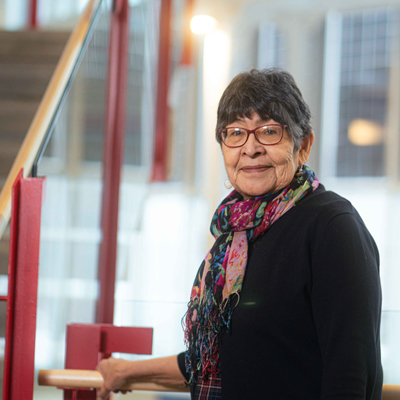
Arthur Beck
Thaıdene Nëné Xá Dá Yáłtı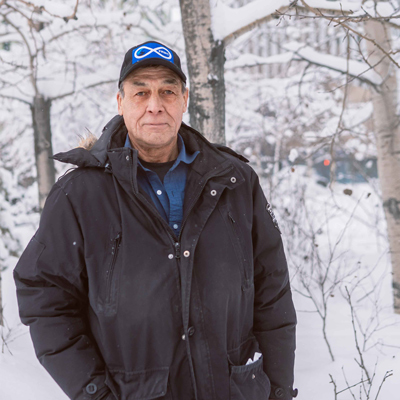
Gloria Enzoe
Thaıdene Nëné Xá Dá Yáłtı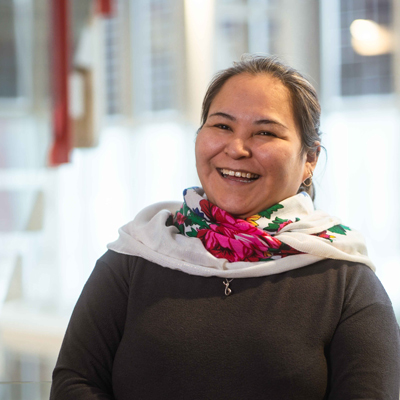
Earl Evans
Board Member
Thaıdene Nëné Xá Dá Yáłtı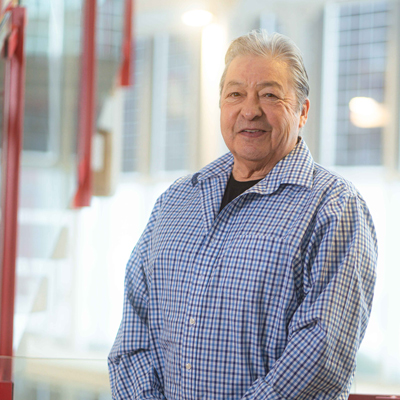
Paul Harrington
Board Member
Thaıdene Nëné Xá Dá Yáłtı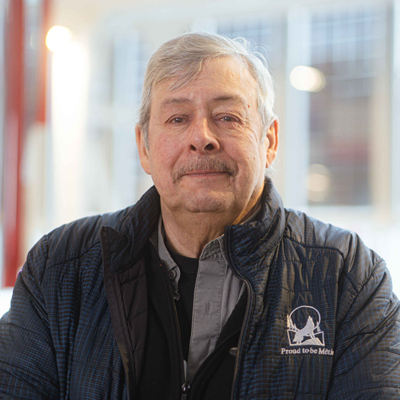
Steven Nitah
Board Member
Thaıdene Nëné Xá Dá Yáłtı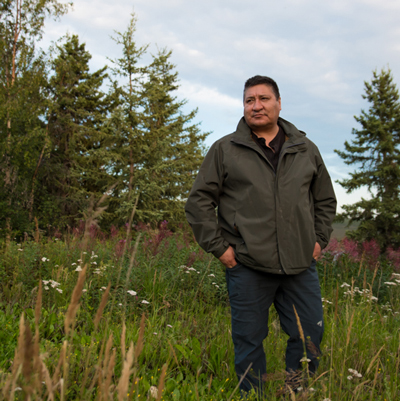
Emelie Saunders
Board Member
Thaıdene Nëné Xá Dá Yáłtı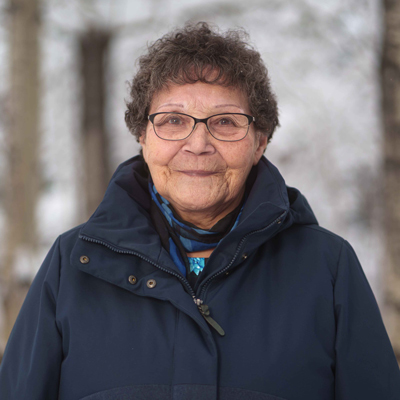
- Date modified :